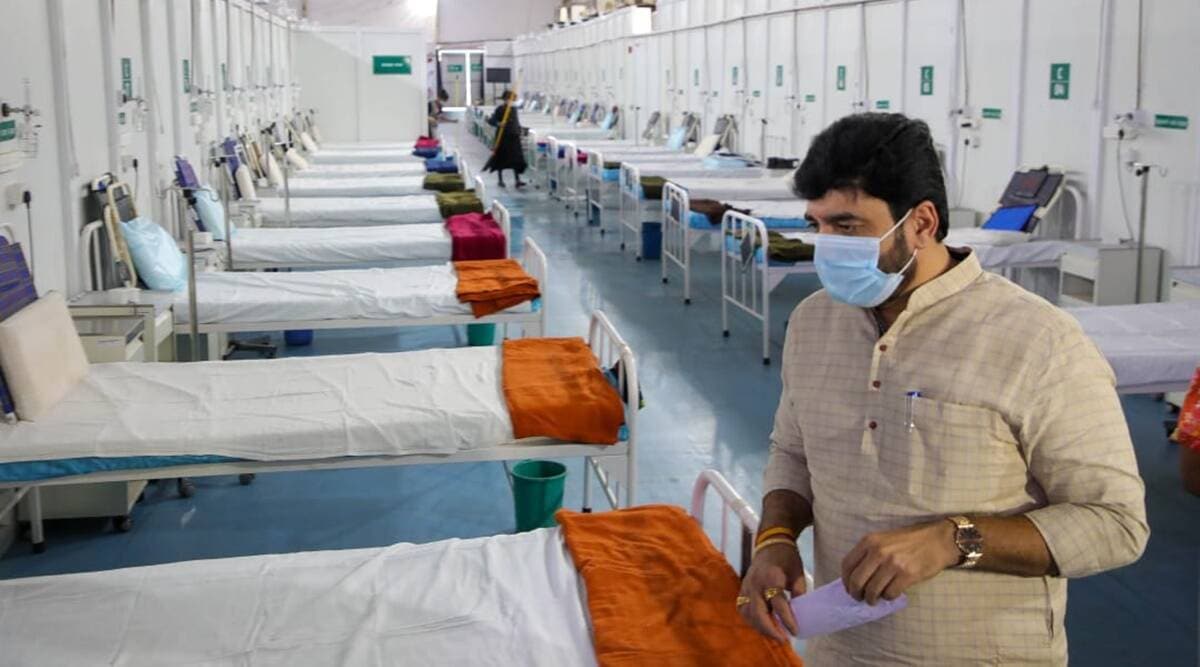 India with its huge and young population can become a provider of healthcare personnel to the world. (File Photo)
India with its huge and young population can become a provider of healthcare personnel to the world. (File Photo)“I wandered lonely as a cloud/ That floats on high o’er vales and hills/ When all at once I saw a crowd/ A host of children frail and ill…….”
I woke up in a panic but felt relieved when I realised it was only a nightmare. I had gone back in time to being a young doctor, feeling helpless with the high infant and maternal mortality rates, a paediatric ward filled with children suffering from tuberculous meningitis, polio, severe malnutrition and diarrhoea.
Today the scenario has vastly changed. The past 10 years especially, have seen rapid progress. We are now blessed with a growing economy and a huge, young population that is relatively healthy. The Covid-19 pandemic has shown the world our capability to handle mega problems. With good leadership and active community participation we became self-sufficient in terms of PPE, ventilators and vaccines. India@100 may see people recount Covid nightmares like the one I woke up from today.
Now, new challenges await us. These include climate change, the rising aspirations of people, inequitable access to resources and the biggest challenge of all: Health. India is predicted to be the capital of non-communicable diseases, cancers and deaths due to trauma. The challenges are humongous due to the huge population of 1.4 billion, juxtaposed against a relatively inadequate public health system and the deep crevice separating the haves and have-nots. However, I envision that India@100 will have addressed all these woes humanely, efficiently and adequately. The need of the day is a revolution to make India a world leader in health. Having spent nearly 40 years in the armed forces, with the motto of my life being, “Country First and Always”, I strongly feel that this is the opportunity of a lifetime for every Indian to give back to the nation.
Provided we act now, the next 25 years will witness a big change in the health indices. For this, we need to collaborate and work together as a society and as a polity. The silos of medical education in colleges, life science research in laboratories and public health in government hospitals will need to be integrated and work in close collaboration, with appropriate linkages through the opportunities lent by NEP 2020, National Digital Health Mission and most importantly, in synchronisation with the central and state governments. India@100 will then see a smoothly oiled machine where public health drives education and research.
Medical education today faces numerous challenges. The most critical of these are the mushrooming of medical, nursing and AYUSH colleges, and non-availability of dedicated faculty. We can overcome these drawbacks by using digital technology to reach the unreached students quickly and effectively. We can also align medical education to India’s healthcare needs through integrated courses and creating a bigger and better pool of paramedical and nursing personnel on priority. It is also important to absorb the trained human resources into the workforce by providing adequate compensation. The aspirations of students need to be met with innovative solutions. For example, the district residency programme can be expanded to provide district PG programmes with adjunct faculty from the public hospitals. This will improve the quality of care and also meet the aspirations of the students. Simultaneously, this will enhance the faculty pool with universities training additional adjunct faculty. Learning management systems (LMS) under various universities can provide equitable opportunities to students across the country. Students will have access to knowledge at their own time and pace. Collaborations with international universities for twinning, joint degree or dual degree programmes is a big opportunity that is available today.
India with its huge and young population can become a provider of healthcare personnel to the world. Another change I can see happening is a blurring of the line between engineering and medicine. While engineering and science institutions are setting up medical colleges which take longer to nurture, medical universities can effectively utilise data science, computing tools and inputs from design schools to improve on innovations and bring problems from bedside to bench in a shorter time to find solutions. Thus, India @100 may provide multiple degrees under one roof.
Research will slowly move out of the laboratories to the bedside. We may need to follow a policy of reserving most of the available funds for life science research towards finding solutions for the health problems of the country for a while till we reach our goals as envisaged by National Missions. With good infrastructure and capacity building, India@100 will have Nobel Prize-winning scientists.
Most clinical, preventive and primary care will be taken over by technology-based solutions and paramedical personnel. Clinicians will need to be trained to provide secondary and tertiary care or carry out research to aid policy changes. India@100 will ensure equitable and the best healthcare to every citizen of the world. People will not need to spend out of pocket or travel long distances on foot to receive healthcare. Ambulatory care (care at home) will be the order of the day and point of care devices will ensure redundancy of big laboratories for medical tests. People will be empowered to make their own decisions. This will reduce medical litigation. Healthcare will see no geographical borders. Doctors will be friends who help people make decisions with empathy and the Indian systems of medicine will be globally lauded.
I will then wake up to a pleasant dream of India@100: “Where the mind is without fear and the head is held high/ Where health education is freely available/ Where healing has not been broken up into ’pathys/ Where health research springs from the depth of truth/ Where tireless striving stretches its arms towards perfection.”
Lt General Madhuri Kanitkar (Retd) is Vice Chancellor, Maharashtra University of Health Sciences